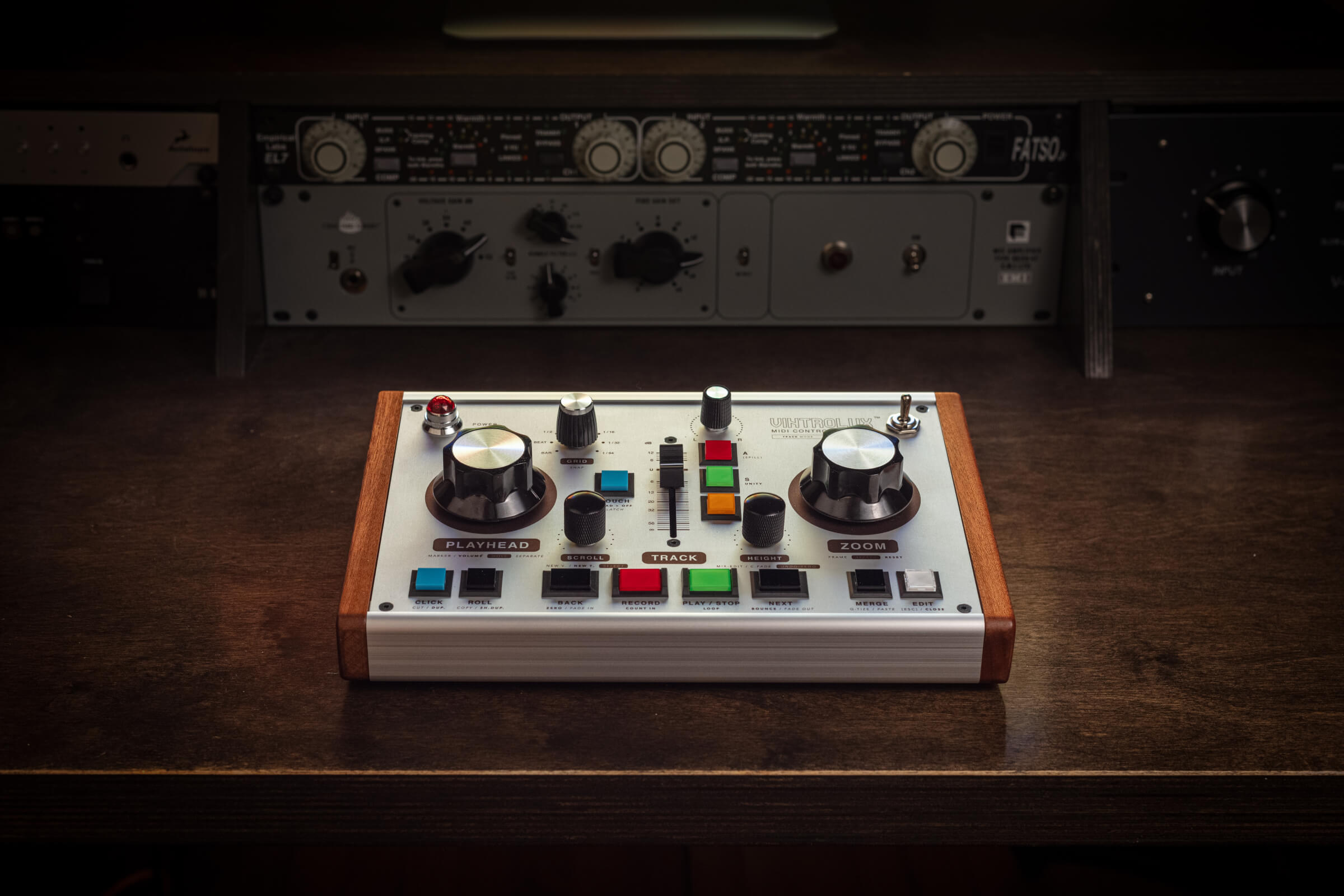Think less. Do more.
Why we built a control surface with fewer buttons - more creative freedom.
Reduced Cognitive Load, Increased Flow
When you reduce the number of physical controls, something interesting happens: your brain stops working so hard to remember where everything is. Muscle memory kicks in faster. Your hands know where to go without thinking. You stop looking down at the controller and start looking at your work.
Solving Button Overload
Most modern control surfaces follow the same philosophy: every function gets its own dedicated button. On the surface, this seems intuitive. But in practice, it creates a cognitive burden that slows you down.
When you're tracking a session or editing in the zone, the last thing you want is to scan a sea of identical buttons, trying to remember which one does what. Your eyes leave the screen. Your focus breaks. The moment is lost.

Context Stacking: Smart Multi-Function Design
The VINTROLUX takes a different approach. Instead of spreading functions across dozens of single-purpose buttons, we use context stacking — grouping related functions onto the same control, reducing the cognitive load compared to memorizing the placement of separate components.

Faster Learning Curve
Fewer controls mean less to memorize. You'll be working at full speed in hours, not weeks.
Stronger Muscle Memory
Your hands learn the layout quickly because the physical space is simplified and logical.
Stay in the Moment
Less visual scanning means your eyes stay on the screen where your creativity lives.
Less Desk Space
A compact footprint gives you more room for keyboards, mics, and coffee.